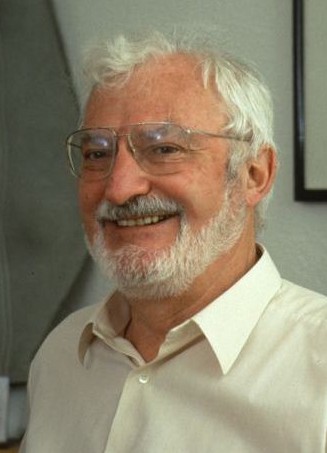-
(b.) -1933 June 06(d.)2013 May 16
Bio/Description
A Swiss physicist who shared half of the 1986 Nobel Prize in Physics with Gerd Binnig for the design of the scanning tunneling microscope (STM), the other half of the Prize was awarded to Ernst Ruska for his invention of the electron microscope. Born in Buchs, St. Gallen, Switzerland half an hour after his twin sister, he enjoyed a carefree country childhood until the family moved to Z?rich in 1949. He enrolled in the Swiss Federal Institute of Technology (ETH) in 1951, where he was a student of Wolfgang Pauli and Paul Scherrer. His Ph.D. thesis was supervised by Professor P. Grassmann who worked on cryogenic engineering. He measured the length changes of superconductors at the magnetic-field-induced superconducting transition, a project begun by J?rgen Lykke Olsen. In the course of his research, he found that he had to do most of his research at night after the city was asleep because his measurements were so sensitive to vibration. His studies were interrupted by his military service in the Swiss mountain infantry. In 1961, he married Rose-Marie Egger. Their honeymoon trip to the United States included a stint doing research on thermal conductivity of type-II superconductors and metals with Bernie Serin at Rutgers University in New Jersey. In 1963, he joined the IBM Research Laboratory in R?schlikon under the direction of Ambros Speiser. The first couple of years at IBM, he studied Kondo systems with magnetoresistance in pulsed magnetic fields. He then began studying magnetic phase diagrams, which eventually brought him into the field of critical phenomena. In 1974, he spent a sabbatical year at the University of California in Santa Barbara, California studying nuclear magnetic resonance. After hiring a young scientist named Gerd Binnig in 1978, the two started collaborating, brought together by their backgrounds in superconductivity and their fascination with atomic surfaces. They grew increasingly frustrated by the limits of the tools then available, so they built their own, capable of seeing and manipulating atoms at the nanoscale level. They began experimenting with tunneling, a quantum phenomenon in which electrons can escape the surface of a solid. When another surface approaches, the electron clouds can overlap and an electric current can flow. In January 1979, the two submitted their first patent disclosure on the scanning tunneling microscope (STM). Soon afterwards, with the help of fellow IBM researcher Christoph Gerber, they began to design and construct the microscope. During their first few months of construction, they made a series of adjustments to their original design, leading to reductions in vibrations and noise, more precise control of the scanning tip?s location and movement, and improved sharpness of the probe tip. Their first experiment involved the surface structure of gold crystal. The resulting images showed rows of precisely spaced atoms and broad terraces separated by steps one atom in height. More refinements to the microscope improved the precision of the mechanical design and resulted in increasingly clearer images. Soon the significance of their invention started reaching scientists around the world, who could now have access to the nanoscale world of individual atoms and molecules. As the STM could also be used to push and pull individual atoms around, it also marked the first time that humans were able to manipulate objects that small. The invention is considered to have opened the door to nanotechnology. "The invention of the scanning tunneling microscope was a seminal moment in the history of science and information technology," said Dr. John E. Kelly III, IBM Senior Vice President and Director of Research. "This invention gave scientists the ability to image, measure and manipulate atoms for the first time, and opened new avenues for information technology that we are still pursuing today." In awarding him and Binnig the Nobel Prize in Physics in 1986, just five years after the first STM had been built, the Nobel committee said the invention opened up "entirely new fields... for the study of the structure of matter." He was also appointed IBM Fellow in 1986, the highest honor a scientist, engineer, or programmer at IBM can achieve. He led the Physics department of the research lab from 1986 until 1988. In 2011, in the presence of 600 guests from throughout the research community, IBM and ETH Zurich dedicated the Binnig and Rohrer Nanotechnology Center in R?schlikon in honor of the scientists' achievements. Gerd Binnig said, ?For me, Heini was father figure, role model, emotional and spiritual teacher, and best friend - all rolled into one. An eminent person, with an incredible sense of humanity and kindness.? He was as famous for his kindly personality as for his sharp wit and humor. During the opening ceremony of the Center he participated in a public discussion with Binnig and Dr. Ralph Eicher, then president of ETH Zurich. He died of natural causes May 16, 2013 at his home in Wollerau, Switzerland. He was 79 and is survived by his wife; daughters Doris and Ellen; and two grandchildren.
-
Date of Birth:
1933 June 06 -
Date of Death:
2013 May 16 -
Noted For:
Co-designer of the scanning tunneling microscope (STM), for which he was awarded half of the 1986 Nobel Prize in Physics -
Category of Achievement:
-
More Info:


